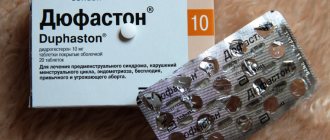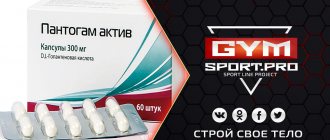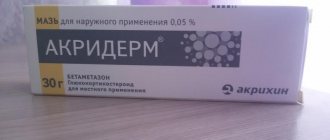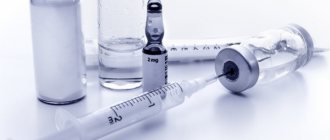Release form, composition and packaging
The following forms of the drug exist:
- Actovegin tablets have a round, biconvex shape and are covered with a yellow-green coating. Packaged in dark glass bottles of 50 pieces.
- Solution for injection 2 ml, 5.0 No. 5, 10 ml No. 10. Contained in clear glass ampoules that have a breaking point. Packed in blister packs of 5 pieces.
- The solution for infusion (Actovegin intravenously) is contained in 250 ml bottles, which are sealed with a stopper and placed in a cardboard box.
- Actovegin cream is packaged in tubes of 20 g.
- Actovegin gel 20% is packaged in tubes of 5 g.
- Actovegin ophthalmic gel 20% is packaged in tubes of 5 g.
- Ointment 5% is packaged in tubes of 20 g.
This product contains deproteinized hemoderivat from calf blood as an active substance. The injection drug also contains sodium chloride and water as additional substances. OKPD code 24.42.13.815.
Actovegin recipe in Latin » Medicines Directory
Actovegin solution for infusion Latin name: Actovegin Pharmacological groups:
Angioprotectors and microcirculation correctors.
Antihypoxants and antioxidants. Other metabolisms. Regenerants and reparants Nosological classification (ICD-10):
I25.2 Previous myocardial infarction. I63 Cerebral infarction. I67.
9 Cerebrovascular disease, unspecified. I69 Consequences of cerebrovascular diseases. I73.9 Peripheral vascular disease, unspecified. I79 Lesions of arteries, arterioles and capillaries in diseases classified elsewhere. I87.2 Venous insufficiency (chronic) (peripheral). I99 Other and unspecified disorders of the circulatory system.
L58 Radiation radiation dermatitis. L89 Decubital ulcer. L98.4.2 Trophic skin ulcer. S06 Intracranial injury. T14.1 Open wound of an unspecified area of the body. T20-T32 Thermal and chemical burns. T79.
3 Post-traumatic wound infection, not classified elsewhere Composition and release form:
| Film-coated tablets | 1 table |
| deproteinized hemoderivative from calf blood | 200 mg |
in dark glass bottles of 50 or 100 pcs.; 1 bottle in a box.
| Solution for injection 40 mg/ml | 2, 5 or 10 ml |
| deproteinized hemoderivative from calf blood (respectively) | 80, 200 or 400 mg |
| excipients: sodium chloride; water for injections |
in ampoules of 2 ml; in a cardboard box there are 25 ampoules or in ampoules of 5 or 10 ml; There are 5 ampoules in a cardboard box.
| Solution for infusion 10% in dextrose solution | 250 ml |
| deproteinized hemoderivative from calf blood (corresponds to 1 g dry weight) | 25 ml |
| excipients: anhydrous glucose for parenteral use - 7.75 g; sodium chloride - 0.67 g; water for injections - up to 250 ml |
in bottles of 250 ml; There are 1 or 10 bottles in a cardboard box.
| Solution for infusion 10% in sodium chloride solution 0.9% | 250 ml |
| deproteinized hemoderivative from calf blood (corresponds to 1 g dry weight) | 25 ml |
| excipients: sodium chloride - 2.11 g; water for injections - up to 250 ml |
in bottles of 250 ml; There are 1 or 10 bottles in a cardboard box.
| Solution for infusion 20% in sodium chloride solution 0.9% | 250 ml |
| deproteinized hemoderivative from calf blood (corresponds to 2 g dry weight) | 50 ml |
| excipients: sodium chloride - 1.94 g; water for injections - up to 250 ml |
in bottles of 250 ml; There are 1 or 10 bottles in a cardboard box.
Description of dosage form:
Film-coated tablets:
round in shape, greenish-yellow in color.
Injection:
clear yellowish solution.
Solution for infusion:
a clear, colorless to slightly yellow solution, practically free of particles.
Pharmacological action:
Metabolic
. Actovegin is an antihypoxic agent and activates the metabolism of glucose and oxygen.
Pharmacokinetics:
The pharmacokinetic characteristics (absorption, distribution and elimination of active ingredients) of a drug consisting only of physiological components that are normally present in the body cannot be studied using pharmacokinetic methods.
To date, a decrease in the pharmacological effect of hemoderivatives has not been found in patients in the presence of factors that can alter pharmacokinetics (for example, hepatic or renal failure, metabolic changes associated with old age, as well as metabolic characteristics in newborns).
Pharmacodynamics:
Actovegin is a hemoderivative, which is obtained through dialysis and ultrafiltration (compounds with a molecular weight of less than 5000 daltons pass through).
The drug causes an increase in oxygen utilization and consumption (increases resistance to hypoxia), increases energy metabolism and glucose consumption. The overall effect of these processes is to enhance the energy state of the cell, especially under conditions of hypoxia and ischemia.
First, extracellular glucose enters the cell using appropriate transport mechanisms, after which glucose utilization occurs in the cell, which begins with the breakdown of glucose and the conversion of its breakdown products in the citric acid cycle.
The products of these metabolic processes are amino acids such as glutamate and aspartate.
This metabolic cascade occurs with the participation of a number of enzymes, for example, pyruvate dehydrogenase (formation of acetyl coenzyme A, synthesis of acetylcholine). Numerous experiments have shown that inositol phosphate oligosaccharides (IPO) are able to regulate some insulin-dependent enzymes, for example, cAMP phosphodiesterase, adenylate cyclase and pyruvate dehydrogenase (PDH). The IFO fraction of the drug Actovegin activates PDH and thereby increases glucose utilization. The drug also stimulates oxygen consumption. This leads to the stabilization of poasmatic cell membranes during ischemia and reduces the formation of lactates.
Actovegin not only increases intracellular glucose levels, but also improves oxidative metabolism, thereby improving the energy supply of the cell, which is evidenced by an increase in the concentration of direct free energy carriers, such as ATP, ADP, phosphocreatinine, as well as amino acids, for example, glutamate, aspartate and GABA .
In cases of metabolic and blood supply disorders to the brain, for example, in cerebral insufficiency syndrome (dementia), the transport of glucose across the BBB and its utilization by cells deteriorate. PDH activity and acetylcholine concentration also decrease. The drug improves the mentioned IFO indicators, has a positive effect on the transport and utilization of glucose; Oxygen consumption generally improves as well. It has been shown that Actovegin causes these effects in peripheral (arterial, venous) circulatory disorders and the corresponding consequences of such disorders (arterial angiopathy, ulcerative lesions of the lower extremities). The use of the drug to accelerate wound healing is also based on the data mentioned above. Actovegin is especially effective in accelerating the healing of ulcers of various etiologies, trophic disorders (bedsores), burns and radiation injuries. At the same time, not only the morphological, but also the biochemical parameters of granulation are improved, for example, the concentration of DNA, hemoglobin and hydroxyproline increases. The effect begins to appear no later than 30 minutes (10–30 minutes) after parenteral administration or oral administration and reaches a maximum after an average of 3 hours (2–6 hours). It does not cause toxic effects or adverse reactions even in doses of 30–40 times the human dose.
Indications:
Film-coated tablets.
As a maintenance therapy for disorders of cerebral metabolism and circulation. To continue injection or infusion treatment for cerebral circulation disorders.
Solution for injection and solution for infusion.
Metabolic and vascular disorders of the brain (cerebral insufficiency syndrome, ischemic stroke, traumatic brain injury), peripheral (arterial and venous) vascular disorders and their consequences (arterial angiopathy, trophic ulcers), wound healing (ulcers of various etiologies, trophic disorders (bedsores) ), secondary healing processes), thermal and chemical burns (radiation damage to the skin, mucous membranes, nervous tissue), hypoxia and ischemia of various organs and tissues and their consequences.
Contraindications:
Allergic predisposition to the drug Actovegin or similar drugs.
Additionally for solutions for infusions.
Decompensated heart failure, pulmonary edema, oliguria, anuria, fluid retention in the body. For patients with diabetes mellitus, the glucose concentration in the dextrose infusion solution should be taken into account.
Use during pregnancy and breastfeeding:
Allowed.
Side effects:
Patients with a history of hypersensitivity reactions may rarely develop allergic reactions (eg, urticaria, edema, drug fever, flash fever, shock) and anaphylactoid reactions. In case of overdose (coated tablets) - symptoms from the gastrointestinal tract.
Interaction:
The injection solution is compatible with isotonic sodium chloride solution, 5% glucose or fructose solution.
Overdose:
Symptoms:
increased side effects.
Treatment:
symptomatic therapy. If necessary, standard therapy for allergic reactions is carried out (antihistamines and/or corticosteroids).
Directions for use and dosage:
Doses and route of administration are determined individually, depending on the nosological form and severity of the disease.
Film-coated tablets. Inside,
without chewing, before meals, with a small amount of liquid, 1-2 tablets.
(200–400 mg) 3 times a day. Duration of treatment is 4–6 weeks. Injection. IM, IV
or
IV
or
as an infusion
.
Usual recommended dose. Taking into account the severity of clinical symptoms, 10-20 ml are initially administered intravenously or intravenously, then 5 ml intravenously or slowly intramuscularly daily or several times a week. When using the drug in the form of infusions, 10–50 ml are diluted in 200–300 ml of isotonic sodium chloride solution or in 5% glucose solution (base solutions), the infusion rate is 2 ml/min. Dosage depending on specific indications Violation of cerebral metabolism and blood circulation:
initially administered intravenously at 10 ml daily for 2 weeks, followed by intravenous administration at 5–10 ml several times a week for 4 weeks.
Ischemic stroke:
20–50 ml is diluted in 200–300 ml of stock solution and administered intravenously daily or several times a week for 2–3 weeks.
Arterial angiopathy:
20–50 ml are diluted in 200–300 ml of base solution and administered intravenously or intravenously daily or several times a week;
The average duration of treatment is 4 weeks. Burns:
10 ml intravenously or 5 ml intramuscularly daily or several times a day, depending on the severity of the lesion (in addition to local therapy with Actovegin).
Prevention and treatment of radiation damage to the skin and mucous membranes:
5 ml intravenously daily in the intervals between radiation exposure.
Solution for infusion. IV drip or IV jet
. The dose of the drug and the method of its administration depend on the clinical picture and severity of the disease.
Usually - 250 ml/day intravenously or intravenously. It is possible to increase the initial dose to 500 ml. The infusion rate is about 2 ml/min. 10–20 infusions may be required to achieve the desired effect.
Dosage depending on specific indications
Violations of blood supply and metabolism of the brain:
intravenously, initially - 250-500 ml / day for 2 weeks, then - 250 ml several times a week for at least 4 weeks.
Ischemic stroke:
IV, 250–500 ml daily or several times a week for approximately 2–3 weeks.
Arterial angiopathy:
intravenous or intravenous, 250 ml daily or several times a week for about 4 weeks.
Trophic and other indolent ulcers, burns:
intravenously, 250 ml daily or several times a week, depending on the speed of healing (in addition to local therapy with Actovegin).
Prevention and treatment of radiation damage to the skin and mucous membranes:
intravenously, on average 250 ml the day before and daily during radiation therapy, as well as for 2 weeks after its completion.
Precautionary measures:
If allergic reactions occur, treatment is stopped.
Inject slowly and not more than 5 ml intramuscularly (the solution has hypertonic properties). With repeated infusions, indicators of water and electrolyte metabolism are monitored. The injection solution and infusion solution have a slightly yellowish tint, the intensity of which depends on the lot number and the starting material, but the color of the solution does not affect the effectiveness or tolerability of the drug. After opening the bottle, the solution cannot be stored. It is not permissible to use the stored solution. You cannot add any medications to the Actovegin infusion solution due to possible pharmaceutical incompatibility. As with all other drugs intended for parenteral administration, before infusion of the Actovegin solution, you must ensure that the
Source: //alldrugs.org/4em/dl/%E0%EA%F2%EE%E2%E5%E3%E8%ED-%F0%E5%F6%E5%EF%F2-%ED%E0-% EB%E0%F2%E8%ED%F1%EA%EE%EC.html
pharmachologic effect
Actovegin is a universal stimulator of metabolism, which leads to a significant improvement in tissue nutrition and utilization of glucose from the blood for the needs of cells of all organs. In addition, Actovegin increases the resistance of cells of all organs and tissues to hypoxia, as a result of which, even under conditions of oxygen starvation, damage to cellular structures is minimally expressed. The general, cumulative effect of Actovegin is to enhance the production of energy molecules (ATP), necessary for the occurrence of all vital processes in the cells of any organ.
The general effect of Actovegin, which consists in improving energy metabolism and increasing resistance to hypoxia, at the level of various organs and tissues is manifested by the following therapeutic effects:
- The synthesis of collagen fibers improves.
- The process of cell division is stimulated with their subsequent migration to areas where tissue integrity needs to be restored.
- The growth of blood vessels is stimulated, which leads to improved blood supply to tissues.
- The healing of any tissue damage (wounds, cuts, cuts, abrasions, burns, ulcers, etc.) and restoration of their normal structure are accelerated. That is, under the influence of Actovegin, any wounds heal easier and faster, and the scar forms small and unnoticeable.
- The process of tissue respiration is activated, which leads to a more complete and rational use of oxygen delivered with blood to the cells of all organs and tissues. Due to more complete use of oxygen, the negative consequences of insufficient blood supply to tissues are reduced.
- The process of glucose use by cells in a state of oxygen starvation or metabolic exhaustion is stimulated. This means that, on the one hand, the concentration of glucose in the blood decreases, and on the other, tissue hypoxia decreases due to the active use of glucose for tissue respiration.
The effect of Actovegin in enhancing the utilization of glucose is very important for the brain, since its structures need this substance more than all other organs and tissues of the human body. After all, the brain uses mainly glucose to produce energy. Actovegin contains inositol phosphate oligosaccharides, the effect of which is similar to that of insulin. This means that under the influence of Actovegin, the transport of glucose into the tissues of the brain and other organs improves, and then this substance is quickly captured by cells and utilized for energy production. Thus, Actovegin improves energy exchange in the structures of the brain and meets its needs for glucose, thereby normalizing the functioning of all parts of the central nervous system and reducing the severity of cerebral insufficiency syndrome (dementia).
In addition, improved energy metabolism and increased utilization of glucose leads to a decrease in the severity of symptoms of circulatory disorders in any other tissues and organs.
Why is Actovegin prescribed to adults and children?
"Actovegin" is a medicine with complex action that affects the intensity of metabolism and blood circulation. It can be used in various situations by both children and adults. The form of release of the medicinal substance directly depends on the indications.
Actovegin tablets are prescribed for the following conditions:
- diabetic polyneuropathy;
- disturbances in the structure of peripheral vessels;
- trophic ulcers;
- vascular pathologies of the brain.
Indications for use of the option for external use are:
- the need to treat the epidermis before skin transplantation (medication in gel form is used);
- prevention of bedsores;
- skin reactions to radiation;
- weeping ulcers;
- burns of any origin;
- open inflammatory processes;
- violation of the integrity of the skin (abrasions, cuts, wounds).
Actovegin injections or intravenous administration using droppers are indicated for:
- burns from chemicals;
- irradiation;
- large wounds and large abrasions;
- trophic ulcers;
- diabetic polyneuropathy;
- dementia and memory disorders;
- TBI;
- ischemic stroke.
Choose the right form of the drug together with your doctor. Only a specialist will be able to determine which medication option will lead to recovery faster.
What does Actovegin help with?
Actovegin can be prescribed for many painful conditions. Its use is justified for the following diseases:
- radiation, thermal, solar, chemical burns up to 3 degrees;
- diabetic peripheral polyneuropathy;
- trophic damage;
- wounds of various origins that are difficult to treat;
- ulcerative skin lesions;
- therapy of hemorrhagic stroke and residual effects after it;
- encephalopathies of different origins;
- disruptions observed in the functioning of venous, peripheral or arterial blood;
- ischemic stroke;
- various traumatic brain injuries;
- angiopathy, especially of diabetic origin;
- emerging bedsores;
- damage to the mucous membranes and skin caused by radiation damage;
- radiation neuropathy.
Scope of application of Actovegin injections
Actovegin injections are prescribed for such vascular disorders of the brain as:
- dyscirculatory encephalopathy, in which the blood supply to the brain is disrupted;
- brain spasm;
- cerebral aneurysm;
- cerebral atherosclerosis;
- traumatic brain injury.
Scope of application of Actovegin injections
Actovegin is effective for:
- cerebral insufficiency;
- ischemic stroke;
- arterial angiopathy;
- thermal and chemical burns;
- skin transplantation;
- radiation damage to the skin, mucous membranes, and nervous tissue;
- ulcers of various etiologies, bedsores;
- retinal damage;
- hypoxia and ischemia of various organs and tissues and their consequences;
- diabetic polyneuropathy.
The effect of Actovegin begins to appear within 10-30 minutes after administration and reaches its maximum after an average of 3 hours.
Instructions for use Actovegin
The instructions for use indicate that Actovegin is used intravenously, intravenously (including in the form of infusion) and intramuscularly.
- Depending on the severity of the clinical picture, 10-20 ml of the drug should first be administered intravenously or intravenously daily; then - 5 ml IV or IM slowly, daily or several times a week.
For infusion administration, 10 to 50 ml of the drug should be added to 200-300 ml of the main solution (isotonic sodium chloride solution or 5% glucose solution). The infusion rate is about 2 ml/min.
For intramuscular injections, use no more than 5 ml of the drug, which should be administered slowly, since the solution is hypertonic.
- In the acute period of ischemic stroke (starting from days 5-7) - 2000 mg/day intravenously, up to 20 infusions, switching to tablet form, 2 tablets. 3 times/day (1200 mg/day). The total duration of treatment is 6 months.
- For dementia - 2000 mg/day intravenously. Duration of treatment is up to 4 weeks.
- For peripheral circulatory disorders and their consequences - 800-2000 mg/day intravenously or intravenously. Duration of treatment is up to 4 weeks.
- For diabetic polyneuropathy - 2000 mg/day IV drip, 20 infusions with switching to tablet form, 3 tablets. 3 times/day (1800 mg/day). Duration of treatment is from 4 to 5 months.
Instructions for using ampoules with breaking point
- Place the tip of the ampoule pointing upward.
- Gently tapping with your finger and shaking the ampoule, allow the solution to flow down from the tip of the ampoule.
- Holding the ampoule with the tip up in one hand, break off the tip of the ampoule at the breaking point with the other hand.
Action of Actovegin
The drug Actovegin activates tissue metabolism, reduces hypoxia, improves trophism, stimulates tissue regeneration, and has an antihypoxic effect. It has a positive effect on the transport and utilization of glucose, stabilizes plasma membranes of cells during ischemia, and reduces the formation of lactates. Improves the morphological and biochemical parameters of granulation - increases the concentration of DNA, as well as hydroxyproline and hemoglobin.
The effect of using Actovegin appears after 10-30 minutes, reaching a maximum after 2-6 hours.
Side effects
Fortunately, if the recommended dose of the drug is exceeded, the patient is not in danger of such an oversight, since it is impossible to harm the body with the physiological components present in Actovegin.
As practice shows, the drug is well accepted by patients and does not cause side effects. However, in rare cases, anaphylactic and allergic reactions associated with individual intolerance to the drug may occur. In addition, the following side effects sometimes occur when taking Actovegin:
- slight redness of the skin or rash on the body;
- general malaise;
- nausea and vomiting;
- headache and loss of consciousness;
- disruption of the gastrointestinal tract;
- joint pain;
- difficulty breathing, sometimes suffocation, caused by tightness of the respiratory tract;
- increased sweating;
- stagnation of water in the body;
- due to the stiffness of the respiratory tract, the patient may even have problems swallowing water, food and saliva;
- excessive agitation and activity.
Composition of solution for injection Actovegin
Composition of solution for injection Actovegin
The main active ingredient of Actovegin is a deproteinized hemoderivative from calf blood. The substance belongs to antihypoxants - drugs that can prevent or weaken the negative effect of oxygen starvation (insufficient oxygen content in tissues) on the body.
From the name it follows that the substance is obtained from the blood of young calves and frees it from protein using special technology. The deproteinized hemoderivative causes activation of metabolism by normalizing and increasing the transport of oxygen through the blood to systems and organs. The substance improves glucose metabolism in tissues and normalizes its absorption, as a result of which the energy level in the body's cells increases due to an increase in the amount of essential amino acids.
Deproteinized hemoderivative from calf blood accelerates recovery and healing processes in all organs and tissues, improves their blood supply. The substance improves nerve conduction in diabetes mellitus and restores the sensitivity of the affected skin.
The excipients in the injection solution are distilled water and sodium chloride. 2 ml ampoules contain 200 mg of deproteinized hemoderivate from calf blood, and 5 ml ampoules contain 400 mg.
special instructions
- Solution for injection and infusion solutions have a slightly yellowish tint. The color intensity may vary from one batch to another, which does not affect the effectiveness of the drug. Do not use a solution that is opaque or contains particles.
- When administered intramuscularly, Actovegin should be administered slowly, no more than 5 ml.
- Due to the likelihood of developing an anaphylactic reaction, a test injection (2 ml intramuscularly) is recommended.
- Actovegin solution in opened packaging cannot be stored.
- With repeated administrations, it is necessary to monitor the water-electrolyte balance of the blood plasma.
Analogues of the drug Actovegin
Actovegin is an effective assistant for accelerating tissue healing and combating hypoxia, but in some cases doctors opt for its analogues. Solcoseryl has a similar composition, but it costs more, so most often the choice is made in favor of the drug under discussion.
There are no other tablets and solutions with a similar effect, but a different composition, on the pharmaceutical market. A specialist will only be able to select a local agent that is similar in effect.
Analogs
The drug Actovegin has no structural analogues for the active substance. Analogs by pharmacological group (antihypoxants and antioxidants):
- Actovegin granulate;
- Actovegin concentrate;
- Antisthene;
- Astrox;
- Vixipin;
- Vitanam;
- Hypoxene;
- Glation;
- Deprenorm;
- Dihydroquercetin;
- Dimephosphone;
- Cardioxipin;
- Carditrim;
- Carnitine;
- Carnifit;
- Kudevita;
- Kudesan;
- Kudesan for children;
- Kudesan Forte;
- Levocarnitine;
- Limontar;
- Mexidant;
- Mexidol;
- Mexidol injection solution 5%;
- Mexico;
- Mexipridol;
- Mexiprim;
- Mexicofin;
- Methylethylpyridinol;
- Metostabil;
- Sodium hydroxybutyrate;
- Neurox;
- Neurolipon;
- Octolipen;
- Olifen;
- Predisin;
- Preductal;
- Rexod;
- Rimecore;
- Solcoseryl;
- Thiogamma;
- Thiotriazolin;
- Trekrezan;
- Triducard;
- Trimectal;
- Trimetazidine;
- Phenozanic acid;
- Cerecard;
- Cytochrome C;
- Eltacin;
- Emoxybel;
- Emoxipin;
- Enerlit;
- Yantavit.
Before using analogues, consult your doctor.
Contraindications for use
Actovegin should not be used in severe heart failure.
The medication has some restrictions on its use. The official instructions indicate that injections are contraindicated for administration in the following cases:
- Hypersensitivity to drug substances
- Pulmonary edema
- Severe heart failure
- Convulsive state
- Excess sodium in the body
- Hyperchloremia
General description of the drug
Actovegin is a drug with antihypoxic action. It is produced in the form of tablets, ointment and gel for external use, solution for injection and solution for droppers. The main component of the drug is hemoderivat. It is obtained from the blood of healthy calves that are fed only milk.
Actovegin in ampoules is used for various diseases, as it acts faster than tablets. This form of drug release is used for intravenous and intramuscular injections. There are ampoules of 2 ml, 5 ml and 10 ml. Each milliliter of solution contains 40 mg of hemoderivate, as well as sodium chloride and water for injection.
You can also purchase a solution for dropper in 250 ml bottles at the pharmacy. It comes in two types: based on dextrose with 10% content of the active substance, as well as on physiological solution with 10 and 20% content of hemoderivative.
These forms of the drug Actovegin are completely ready for use. They do not need to be diluted with anything and cannot be mixed with anything. The ampoules contain a clear, yellowish liquid. If the solution contains foreign impurities, as well as if the seal of the packaging has been broken, the medicine cannot be used. After opening the ampoule, you must use its entire volume at a time; it cannot be stored.
Actovegin solution is a clear yellowish liquid
Side effects
When treated with Actovegin, the following side effects may occur:
- allergic skin rashes;
- increased sweating;
- swelling;
- increased body temperature;
- dysfunction of the gastrointestinal tract;
- rapid heartbeat accompanied by pain;
- pale skin;
- headache;
- loss of consciousness;
- pain in the lower back, bones and joints.
If side effects occur, you should stop taking Actovegin and take measures to eliminate unpleasant symptoms.
If side effects occur, stop taking Actovegin and take measures to eliminate unpleasant symptoms.
Analogue drugs in tablets
There are analogues of Actovegin, which are available only in tablet form.
Chime
Curantil is a myotropic vasodilator that is able to stop the aggregation of platelet molecules, which promotes better microcirculation in the brain, as well as in the peripheral parts of the bloodstream and in the myocardium. The main component in the drug is dipyridamole with a vasodilating effect.
The drug is prescribed for therapy, as well as as a preventive measure for the following diseases:
- cerebral ischemia and stroke;
- myocardial infarction and post-infarction period;
- encephalopathy;
- stable and unstable angina;
- impaired blood flow in the cerebral organs;
- endarteritis;
- impaired blood circulation in the placenta and its insufficiency;
- after surgical treatment, in order to avoid the formation of thrombosis.
Features of the action of Curantil
It is prohibited to use Curantil in patients with the following pathologies:
- hypotension;
- collapse;
- IHD;
- allergy to a medication;
- kidney and myocardial failure;
- acute phase of myocardial infarction;
- bleeding of unknown etiology.
The use of medication during pregnancy requires great care in determining the dosage. Curantil is prescribed as a last resort, when there is a real threat of the development of intrauterine pathologies due to fetal hypoxia.
Dosage per day for patients over 12 years of age is 75-225 mg. The dosage should be divided into 3-6 administration procedures. The permissible dosage per day is 600 mg. After the patient's condition has stabilized, the dose should be reduced to 50 mg. Maintenance therapy should be carried out with a daily dosage of 25-50 mg.
When taking Curantil and anticoagulants together, the dosage should not exceed 75 mg per day. You can increase the effectiveness of the medicine if you take it correctly - no later than 60 minutes before eating.
The drug can be used over a long course of medication.
Negative actions do not occur often. The following reactions of the body to the medication are noted:
- allergies - urticaria, skin rash and itching, Quincke's edema, dermatitis;
- digestive tract - vomiting, severe diarrhea, pain in the epigastric and abdominal region;
- CNS and heart - pain in the head, decreased blood pressure index, dizziness, bradycardia, arrhythmia.
Cortexin
Cortexin is a nootropic drug based on peptide bioregulators from the brain substrate of young pigs. The medication has anticonvulsant and cerebroprotective effects and is an antioxidant.
Cortexin is prescribed to treat the following diseases:
- viral neuroinfection;
- disturbance in cerebral blood flow;
- brain and skull injuries;
- encephalopathy of various etiologies;
- encephalomyelitis;
- asthenic syndrome;
- encephalitis;
- epileptic seizures;
- autonomic disorders;
- deviations in child development;
- cerebral palsy;
- memory loss;
- decreased intellectual abilities;
- delayed speech development in a child.
Mechanism of action
During pregnancy, it is not recommended to take Cortexin due to the lack of clinical safety indicators regarding the developing fetus. During lactation, a woman must transfer her child to artificial nutrition, and only after that can she begin therapy with this medication.
The medication is administered intramuscularly once a day. The solution is diluted with procaine or sodium chloride. For adults, the daily dosage is 10 mg of cortexin for 10-14 days, as well as the same dose for children weighing more than 20 kg. For children up to 20 kg, the dose is calculated according to weight - 0.5 mg per 1 kg of body weight. A repeat course can be carried out after 3-6 months.
When treating the acute phase of a stroke, 10 mg is prescribed twice a day for 10 days. After a 10-day break, the therapeutic course must be repeated.
Adverse reactions when using the drug occur very rarely and can manifest as allergic reactions - skin rashes, redness at the injection site, itching of the skin.
Indications for use: why is Actovegin prescribed?
The use of Actovegin is advisable in all cases when oxygen starvation of the body is diagnosed. Therefore, according to the instructions, Actovegin is prescribed in the following cases:
- damage to the cornea and sclera (burns, ulcers, keratitis, abrasions of the cornea when using contact lenses);
- cerebrovascular insufficiency;
- ischemic stroke;
- traumatic brain injury;
- bedsores;
- burns;
- radiation injuries;
- peripheral circulatory disorders;
- angiopathy;
- trophic disorders in varicose veins of the lower extremities;
- ulcers of various etiologies.
In addition, Actovegin is prescribed for the treatment of burns of various etiologies - thermal, solar, radiation. If the patient is undergoing a course of therapy for the treatment of varicose veins, then Actovegin injections will help speed up the process of restoring vascular function. It is also advisable to take Actovegin injections during the period of rehabilitation after a cornea transplant, in the treatment of inflammatory processes of the eyes.











